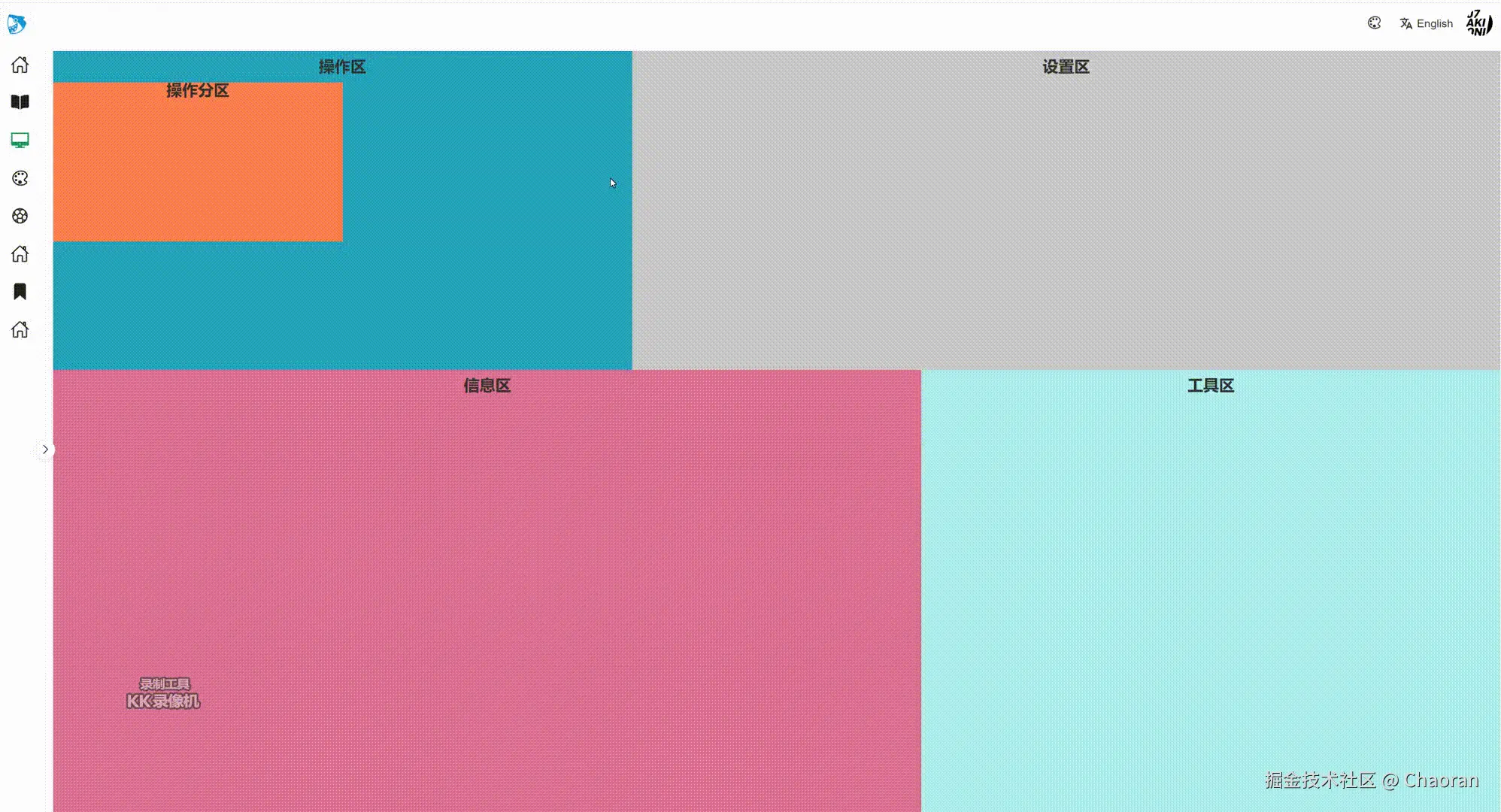实现思路
在 vue 中封装右键菜单组件时,可以通过 addeventlistener 监听 contextmenu 事件,也可以直接在标签上绑定 @contextmenu事件。由于我们在 vue 中封装组件,应当充分利用框架的优势,使用 @contextmenu 语法来让代码更简洁和易于维护。
封装组件
由于不同区域需要显示不同的菜单项,因此该组件的菜单项由外部传入。
defineexpose将变量、方法暴露出去,使得父组件能够访问这些暴露的内容
menu.vue
<template>
<div class="menu" v-if="show" ref="menuref">
<div
class="menu-item"
v-for="(item, index) in operation"
:key="index"
@click="handleclick(item.name)"
>
{
{ item.name }}
</div>
</div>
</template>
<script lang="ts" setup>
//友情提示:如果使用的不是naive-ui可以直接将有关naive-ui的代码注释掉
import { usemessage } from 'naive-ui'
import { nexttick, ref } from 'vue'
//使用naive-ui的消息提示框,要在根组件使用 <n-message-provider></>n-message-provider>
let message = usemessage()
//点击菜单项
const handleclick = (name) => {
message.info(name)
show.value = false
}
// 接收父组件传入的菜单项
defineprops({
operation: {
type: array,
default: () => [],
},
})
//用来显示、隐藏菜单
const show = ref(false)
let menuref = ref()
//获取并设置菜单的位置
const setposition = (x, y) => {
nexttick(() => {
let dom = menuref.value
dom.style.left = x + 'px'
dom.style.top = y + 'px'
dom.style.height = 'fit-content'
let height = dom.style.height
dom.style.height = height
})
}
//暴露数据
defineexpose({
show,
setposition,
})
</script>
<style lang="scss" scoped>
.menu {
width: 100px;
padding-top: 10px;
padding-bottom: 10px;
border-radius: 10px;
background: #ffffff;
height: 0px;
position: absolute;
z-index: 1000;
.menu-item {
font-size: 16px;
width: 100%;
text-align: center;
padding-top: 4px;
padding-bottom: 4px;
cursor: pointer;
transition: 0.5s;
}
.menu-item:hover {
background: #e2e2e2;
transition: 0.5s;
}
}
</style>
使用组件
在父组件使用组件 在页面中,我们通常会划分多个区域,右键点击不同的区域时展示不同的菜单。在这种情况下,需要在事件处理函数中阻止浏览器的默认右键菜单弹出。此外,如果区域内嵌套了其他区域,还需要阻止事件冒泡,确保事件只在当前区域内处理,从而避免影响到其他区域的右键菜单。
index.vue
<template>
<div class="contextmenu" @click="displaynonemenu()">
<div
class="box-1 box"
@contextmenu="handlecontextmenu($event, 'operationref')"
>
<div class="text">操作区</div>
<menu ref="operationref" :operation="operation"></menu>
<div
class="box-1-1"
@contextmenu.stop="handlecontextmenu($event, 'operation2ref')"
>
<div class="text">操作分区</div>
<menu ref="operation2ref" :operation="operation2"></menu>
</div>
</div>
<div
class="box-2 box"
@contextmenu="handlecontextmenu($event, 'settingref')"
>
<div class="text">设置区</div>
<menu ref="settingref" :operation="setting"></menu>
</div>
<div class="box-3 box" @contextmenu="handlecontextmenu($event, 'inforef')">
<div class="text">信息区</div>
<menu ref="inforef" :operation="info"></menu>
</div>
<div class="box-4 box" @contextmenu="handlecontextmenu($event, 'toolref')">
<div class="text">工具区</div>
<menu ref="toolref" :operation="tool"></menu>
</div>
</div>
</template>
<script lang="ts" setup>
import menu from './menu.vue'
import { ref } from 'vue'
//不同的菜单
let operation = [
{
name: '添加',
},
{
name: '删除',
},
{
name: '编辑',
},
]
let operation2 = [
{
name: '查看详情',
},
{
name: '查看用户',
},
]
let setting = [
{
name: '修改属性',
},
{
name: '更新',
},
]
let info = [
{
name: '查看日志',
},
{
name: '显示数据',
},
]
let tool = [
{
name: '复制',
},
{
name: '粘贴',
},
{
name: '删除',
},
]
// 给子组件绑定ref 获取组件实例
let operationref = ref()
let operation2ref = ref()
let settingref = ref()
let inforef = ref()
let toolref = ref()
// 缓存当前显示的菜单
let currentmenuref = ref()
//点击任何区域,隐藏菜单
const displaynonemenu = () => {
if (currentmenuref.value) {
currentmenuref.value.show = false
}
}
//右键事件
const handlecontextmenu = (e, ref_) => {
//阻止浏览器默认事件
e.preventdefault()
if (currentmenuref.value) {
//在显示下次菜单前,先隐藏上一次的菜单。
currentmenuref.value.show = false
}
let menuref = null
switch (ref_) {
case 'operationref':
menuref = operationref.value
break
case 'operation2ref':
menuref = operation2ref.value
break
case 'settingref':
menuref = settingref.value
break
case 'inforef':
menuref = inforef.value
break
case 'toolref':
menuref = toolref.value
break
}
// 通过获取到的组件实例,设置菜单的显示和位置
menuref.show = true
menuref.setposition(e.offsetx, e.offsety)
currentmenuref.value = menuref
}
</script>
<style lang="scss" scoped>
.contextmenu {
height: 100%;
width: 100%;
background: palegreen;
border-radius: 10px;
display: flex;
flex-flow: wrap;
.box {
position: relative;
}
.box-1 {
width: 40%;
height: 40%;
background: #25a4bb;
.box-1-1 {
width: 50%;
height: 50%;
background: coral;
}
}
.box-2 {
width: 60%;
height: 40%;
background: #cacaca;
}
.box-3 {
width: 60%;
height: 60%;
background: palevioletred;
}
.box-4 {
width: 40%;
height: 60%;
background: paleturquoise;
}
.text {
font-weight: 600;
font-size: 20px;
color: #333333;
text-align: center;
font-family: 'avenir', helvetica, arial, sans-serif;
margin-top: 10px;
}
}
</style>
效果

到此这篇关于vue3封装实现右键菜单组件的文章就介绍到这了,更多相关vue3右键菜单组件内容请搜索代码网以前的文章或继续浏览下面的相关文章希望大家以后多多支持代码网!







发表评论